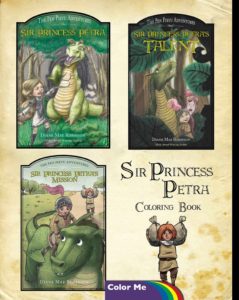
 This guest post is by Tom Bentley. Bentley is a fiction writer, an essayist, and a business writer and editor. (He does not play banjo.) He’s published hundreds of freelance pieces—ranging from first-person essays to travel pieces to more journalistic subjects—in newspapers, magazines, and online. He is the author of a coming-of-age novel and a short story collection. You can see examples of his services, his published writing, and his lurid website confessions at tombentley.com.
This guest post is by Tom Bentley. Bentley is a fiction writer, an essayist, and a business writer and editor. (He does not play banjo.) He’s published hundreds of freelance pieces—ranging from first-person essays to travel pieces to more journalistic subjects—in newspapers, magazines, and online. He is the author of a coming-of-age novel and a short story collection. You can see examples of his services, his published writing, and his lurid website confessions at tombentley.com.
You’d never mistake Donald Barthelme for Ernest Hemingway; the word blossoms gathered in Virginia Woolf’s garden would have flowers not found in the window-box plantings of Joan Didion. So your writing and your writing voice shouldn’t be confused with Schlomo Bierbaum’s—it should be yours alone.
One of the things that made me think of a person’s voice was a literal voice: a few years ago I saw Ricki Lee Jones in concert, and was so struck by her uniqueness as a performer (and possibly as a person). She was cuckoo and mesmerizing in the best of ways on stage: banging on the roof of the piano, exhorting the other players, talking to them in asides during some songs. She played a lunatic version of Don’t Fear the Reaper(!), beating out a slapclap on the top of her piano. The performance was so Rikki Lee Jones: singular, eccentric, passionate, moody. You wanted to be around her just to see what she might do or say (or sing) next. Her voice was hers and hers alone.
Your Writing Voice Is There for the Singing
When you’re developing your writing voice, you might be so painstakingly wrapped up in expressing yourself JUST SO that you drain the blood out of your writing, or pull the plug on the electricity of your ideas. You might have read an essay by Pico Iyer or a story by Alice Munro or a novel by Cormac McCarthy and you might be trying so hard to source and employ the rhythms, humors and tics of those gifted writers that you spill onto the page a fridge full of half-opened condiments that cancel each other’s flavors.
Be yourself behind the pen, be the channel between what cooks in your brain and what courses through the keyboard. Even if that self is one day the grinning jester and another the sentimental fool, be fully that person, unmasked, on the page. Maybe you grew up in a slum in Mumbai or have a pied-à-terre in every European capital, maybe your adolescence was a thing of constant pain, maybe you never made a wrong move, maybe you never moved at all—it should be in your writing, whether in its proclamations or its subtext. Your voice is all the Crayons in your box.
[Here are 12 Lessons Learned From a Debut Author That Will Help You Get Published]
For instance, if you’re inclined to the confessional (like all us old Catholics), turn to your sins: I was a very enterprising shoplifter in high school, running a cottage resale business on the side. While I don’t recommend they teach my techniques in business school, I later forged my history of happy hands into an award-winning short story, and then turned the account of having won that short story contest into a published article in a Writer’s Market volume. Ahh, the just desserts of an empire of crime.
A Voice, and Its Chorus
Of course it’s no monotone: Sometimes I might write about Sisyphus and sometimes I might write about drool (and sometimes I might speculate whether Sisyphus drooled while pushing the rock up that endless hill). By that I mean your short stories might have a female narrators, male narrators, be set in a tiny town one time and in a howling metropolis the next. But you still must find the voice—your voice—for that story.
I like to write essays that often take a humorous slant, but at the same time, that isn’t the limit or restriction I put on my own expression. I published a piece on not actually knowing my father despite my years with him, and another that discusses never finding out what happened to my high school girlfriend after she vanished in Colombia. Both had a tone of pathos. That pensive tone is also one of my voices, and its sobriety doesn’t cancel the chiming of my comic voice. So your voice might be part of a choir.
[Want to land an agent? Here are 4 things to consider when researching literary agents.]
Getting Gritty About Grammar
A friend of mine who was putting together a “private university” once asked me if I would teach a 16-session class on grammar, because of what she perceived as the lamentable state of comprehension of language structures and their underpinnings among the young. Now I could probably do a decent job of that, though I’d definitely have to brush up on some grammar formalities and its seemingly obscurantist vocabulary. But after thinking about it, I decided that it just wasn’t right for me. It wouldn’t be an expression of my voice, like teaching a class on writing an essay or developing a character would be.
The tools are important indeed, but the authentic voice is transcendent.
Here’s a good, helpful essay on finding and developing your writer’s voice, courtesy of Writer’s Digest (and here’sanother fine one, on the same topic from Jane Friedman). An important point in both essays is that the expression of self in writing, be it in diction, passion, slant or tone, can be a variant thing—the hummingbird’s flight is always expressive of the bird, but its dartings and hoverings aren’t always approached from the same direction or desire.
So, let your writer’s voice take wing.



![The Dragon Grammar Book: Grammar for Kids, Dragons, and the Whole Kingdom by [Robinson, Diane Mae]](https://images-na.ssl-images-amazon.com/images/I/41mMwUWh5wL.jpg)
 Diane Mae Robinson is the international multi-award-winning author of the children’s fantasy/adventure series, The Pen Pieyu Adventures. The author is also an artist, art teacher, editor of children books, and a writing instructor.
Diane Mae Robinson is the international multi-award-winning author of the children’s fantasy/adventure series, The Pen Pieyu Adventures. The author is also an artist, art teacher, editor of children books, and a writing instructor.



 Diane is an international, multi-award winning children’s fantasy book author . Read more about her books here:
Diane is an international, multi-award winning children’s fantasy book author . Read more about her books here: Two things every poet needs to know are the rise and fall of meter and the rhythm that carries from one line to the next.
Two things every poet needs to know are the rise and fall of meter and the rhythm that carries from one line to the next.




